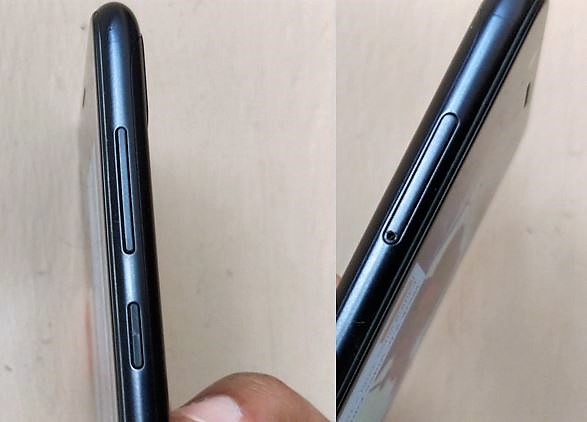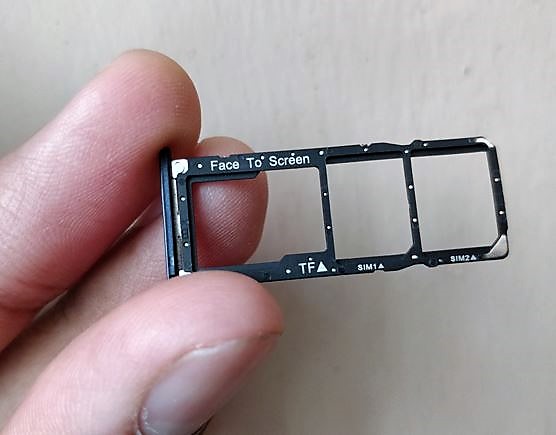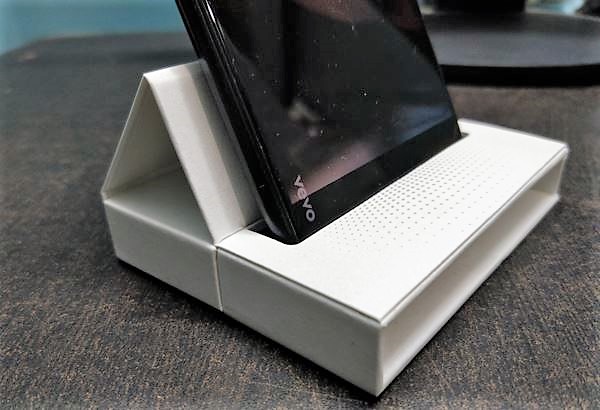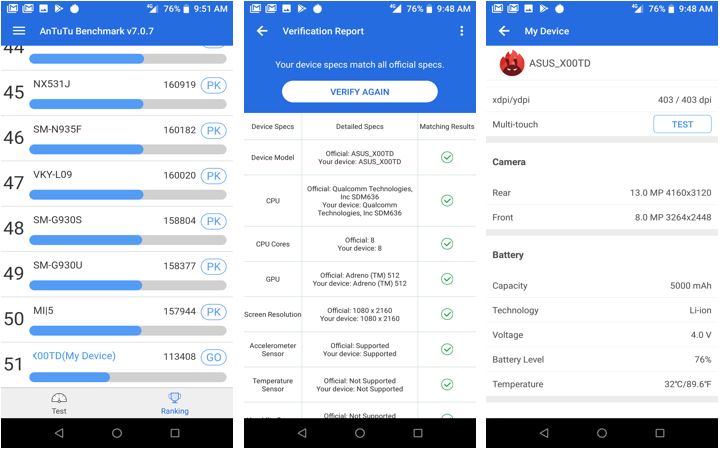-
Features
-
Camera
-
Build Quality
-
Performance
-
Software
-
Display
-
Battery
-
Value for Money
Summary
The Asus Zenfone Max Pro M1 is a value for money product and can easily beat other phones available in the price segment of INR 15000. The things which it needs to improve are the camera app and battery optimization which surely be done by the company in the future via OTA software updates. I am not a big fan of the smartphones launched by Asus so far because of performance & overprice issues but this one I really want to recommend users those are planning to buy a phone under INR 15K.
Also many users are confused between Redmi Note 5 Pro and Zenfone Max Pro M1; I would like to say, according to the benchmark scores, if you just want a performance then Redmi note 5 Pro can be your first choice but to get overall good software and hardware experience including battery backup, go for the Asus Max Pro M1.
Pros:
Good Display
Solid design
Overall performance
Budget price
Cons:
Camera autofocus & uneven blur performance
Price: The 3GB+ 32 GB variant is available at ₹ 10,999 (around $166) in India while 4GB +64GB is selling at ₹ 12,999 ( around $196).
Asus smartly played this time to launch a new smartphone in the market ASUS Zenfone Max Pro (M1) (ZB601KL). It is a budget segment smartphone but with lucrative specifications; at least at the price charged for this phone by the Asus. Another story is that despite performing good in the mid-segment still somewhere the Asus not able to compete for Chinese brands like Xiaomi. So, this time the Zenfone Max Pro M1 can prove a good weapon against the Redmi devices previously launched with almost same specs and price.
We had reviewed so far so many devices of Asus such as Asus Zenfone Live ZB501kl, Asus Zenfone 3s Max, Zenfone 3 Laser Pixel and more but Zenfone Max Pro M1 is far better than previous devices. Becuase under INR 15,000 (around $225); it comes with 5000mAh battery, dual camera, and other good features those are enough good to fight against phones fall under same price category.
So, let’s see the review of the Asus Zenfone Max Pro M1 and to know whether it is your cup of tea or not.
Asus Zenfone Max Pro M1 Review
Design
The Asus Zenfone Max Pro looks is not much different than the other smartphones present in this price category but that doesn’t mean it is bad. It looks really good with the metal back and strong structure. The weight of the phone is 180 grams which may sound heavy but don’t forget it has 5000mAh battery.
The display of the phone has an aspect ratio of 18:9 with narrow bezels. The corners of the phone are well-rounded amalgamated with the 2.5D curved glass of the phone which according to Asus uses some kind of protective layer but exactly what type of? Is still not mentioned by the company. However, despite being a large size display phone, it can still easily fit in your palm.

Coming to the back side of the phone, a metal plate with soft matte finish has sandwiched between the plastic sides. The feel of metal finish is really good but attract smudges and fingerprints a lot. The best thing which appears on the rear side of the phone is the dual camera setup along flash without any bulge like iPhone, Oneplus and other phone cameras, it saves your camera lens from the rough surface a bit at least.

The Fingerprint resides in the middle upper portion along with the Asus logo, overall you can’t find any innovation in terms of design but whatever they offer is of good quality and an easy to handle design which surely going to like by most of the users.

Display
As I said, the display of the Zenfone Max Pro M1 possesses the aspect ratio of 18:9 which allow it to pack the 5.99 inches display in such a compact design. The display of the phone uses IPS panel with a Full HD resolution, 1500:1 contrast ratio, 450nits maximum brightness, and oleophobic coating to get rid of the oily fingerprint marks.

The color reproduction by the display is vibrant and enough bright to use it under the direct sunlight or in outdoor environments. Yes, the contrast ratio of the phone is not like the AMOLED display but at this price, I can’t expect something better than it has. Even the viewing angles of the phone are much better than any other phone available at the price of Asus Max M1 pro.

Camera

Asus Zenfone Max Pro M1 features dual rear camera setup with a 13MP primary camera and a 5MP secondary camera lens for depth effect. We are not going to discuss it here because already have done a detailed article on it along sample images… What we want to say about the camera of the phone; it is a decent camera at the price you are paying for and can compete the Xiaomi Redmi Note 5 Pro camera quality easily. Please have a look: Asus Zenfone Max Pro M1 (ZB601KL) Camera Review with Image samples
Hardware & Performance
The Asus Zenfone Max Pro M1 features balanced but better specs offered by other smartphone players in the same segment. The device has a dual nano-SIM card tray along dedicated space for microSD card that means you don’t have to worry; if you are running out of the inbuilt 32 or 64 GB storage of the phone. Actually, the Max Pro M1 is available in two versions– one is 4 GB RAM with 64 GB storage and other is 3 GB RAM along 32 storage. The plus point is while using dual SIM cards simultaneously you can also use the memory card to expand the external phone storage up to 2TB.

During the launch event of the Zenfone Max Pro M1, the Asus also announced that they will soon be going to launch the 6GB with 64 Gb variant of the same phone with better camera capabilities soon at INR 14,999.
Both the SIM slots support the 4G VoLTE but only one can use it at any given time while other one limited to 3G.
Like same the Redmi note 5 Pro, the Asus Zenfone Max Pro M1 also uses the Qualcomm Snapdragon 636 to carry out process. It is a 14nm chipset with custom Kyro cores optimized efficiently and because of that, it offers almost 50% jump in the performance as compared to the Snapdragon 625.
The thing which disappointed us a bit is that it is a 2018 smartphone and still the USB port you are getting on the phone is MicroUSB rather it should be the USB Type-C.
If you talk about the performance of the phone, then the phone variant we got for the review was 3GB +32GB. It really performed well in our test. From the hardcore games to everyday multitasking work the Asus Zenfone Max Pro M1 easily able to nail everything and I want to give this credit to the stock Android of the phone. The phone runs on the Android Oreo and company also assured that the user will get the next three Android OS upgrades.
Yes, during the heavy gaming the phone heated up slightly but we didn’t feel any type of discomfort.
The Zenfone Max Pro M1 really designed very ergonomically because they offered 5000 mAh battery in a compact body. But wait a minute despite having such huge battery size still the phone not able to achieve what it should be. If you are an active user, the phone can easily last long for one day with some carry forward battery backup for the next day. I know it sounds enough but still, you are talking about 5000 mAh battery with a stock Android; which means it there should more juice of power normal users. However, in our battery benchmark test, we got 10 hours 31 minutes from 80% to 20% usage. It sounds enough but there is always a difference between the benchmark and real-world usage. But maybe in the future software updates of Asus, you may get better optimization to get longer battery life. However, still the 10 hours back up on the usage of 60% is really more than enough.

Now the thing is big battery also takes a long time to charge and same with the Max Pro M1. With the bundled charger 2A/10W charger for fast charging, the phone took around 3 hours to get fully charged from 0% to 100%.
The audio output of the Zenfone Max pro is loud and uses built-in NXP amplifier and a 5-magnet speaker. The performance is really very solid and also to enjoy the music the company has packed a Max Box accessory in the box of the phone. It is basically a non-electronic accessory which passively gives the effect of amplifying sound by concentrating it in one direction.

The material used in the Max Box is plain cardboard with an inbuilt magnet to convert it into a stand for the phone. In short it just a gimmick but as it bundled free, we won’t have any complaint about it, however, the users definitely going to enjoy it. Overall, the performance of the phone is not going to disappoint you.


Software & Benchmark scores
It is an Asus first phone that runs on the stock Android without any major customization. It comes with some pre-installed apps such as Instagram, Facebook, Messenger, and Go2Pay mobile wallet. Few other basic but handy apps also included such as FM radio, Voice Recorder, and Calculator. Rest, if you talk about the interface of the phone, it is same as a stock Android phone should have.

For connectivity, it has Wifi, Bluetooth 4.2 with Qualcomm’s AptX technology, Cast, and micro USB. To secure the phone, fingerprint sensor and Face recognition are also on the phone. Both are pretty good and fast without any delay in unlocking the device, however, to get accuracy in fingerprint sensor try to enroll one finger two times.

Coming to the benchmarks scores, if you talk about the performance in the real world then it is snappy and lags free but if talk about the benchmark scores then it not able to beat the Xiaomi Redmi Note 5 Pro. You can see that in the Antutu benchmark scores. If you are a gamer then Redmi note 5 Pro can give more juice in terms of performance but for overall software and hardware experience, the Asus Max Pro M1 is better.
Antutu Benchmark scores for Asus Zenfone Max Pro M1


Asus zenfone Max Pro M1 3D benchmark score

Geekbench benchmark scores for Zenfone Max Pro M1

Review Synopsis
The Asus Zenfone Max Pro M1 is a value for money product and can easily beat other phones available in the price segment of INR 15000. The things which it needs to improve are the camera app and battery optimization which surely be done by the company in the future via OTA software updates. I am not a big fan of the smartphones launched by Asus so far because of performance & overprice issues but this one I really want to recommend users those are planning to buy a phone under INR 15K.
Also many users are confused between Redmi Note 5 Pro and Zenfone Max Pro M1; I would like to say, according to the benchmark scores, if you just want a performance then Redmi note 5 Pro can be your first choice but to get overall good software and hardware experience including battery backup, go for the Asus Max Pro M1.
The Asus Zenfone Max Pro M1 is available in two colors meteor silver and deepsea black. The 3GB+ 32 GB variant is available at ₹ 10,999 (around $166) in India while 4GB +64GB is selling at ₹ 12,999 ( around $196).
You might want to know about:
Related Posts
Moto G85 5G launched in India but is unlikely to beat VIVO or XIAOMI
What is stopping smartphone gaming from becoming the next big thing? The problems, and the possible solutions
Smartphone buying guide for everybody. The ultimate guide to not regret your smartphone purchase after buying.
Vivo Y200 5G smartphone Launched in India: Checkout the specifications and pricing
Samsung Galaxy S24 Series Rumors: Release Date and What to Expect
Hyper OS to Take the Lead Over Xiamoi’s MIUI